The arrival of a newborn baby brings immense joy and a plethora of emotions, often accompanied by a touch of apprehension, especially for pet owners. The heartwarming story of Winston and Doug, two canine brothers welcoming their human baby sister, beautifully captures this mix of emotions and showcases the profound bond that can blossom between dogs and children.

This is the story of an introduction of the newborn baby to Winston and Doug. Initially, the owners expressed a natural concern about the dogs’ potential behaviour around the fragile infant. However, their worries quickly dissipate as the two dogs exhibit remarkable gentleness and affection towards their new sibling.
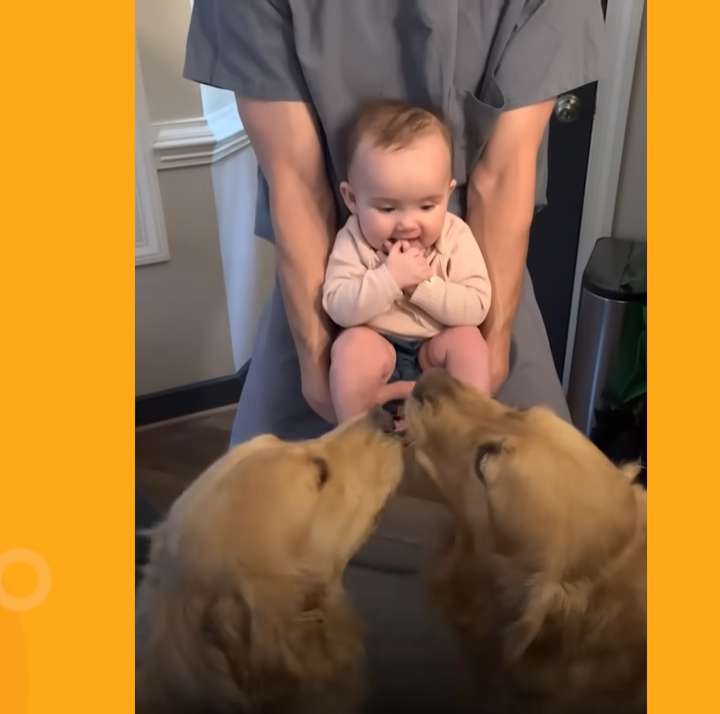
Winston and Doug become constant companions to the baby, offering unwavering presence and comfort. Their gentle nudges, curious sniffs, and soft licks demonstrate an innate understanding of the baby’s vulnerability. The baby, in turn, reciprocates their affection with gurgles, smiles, and playful interactions.
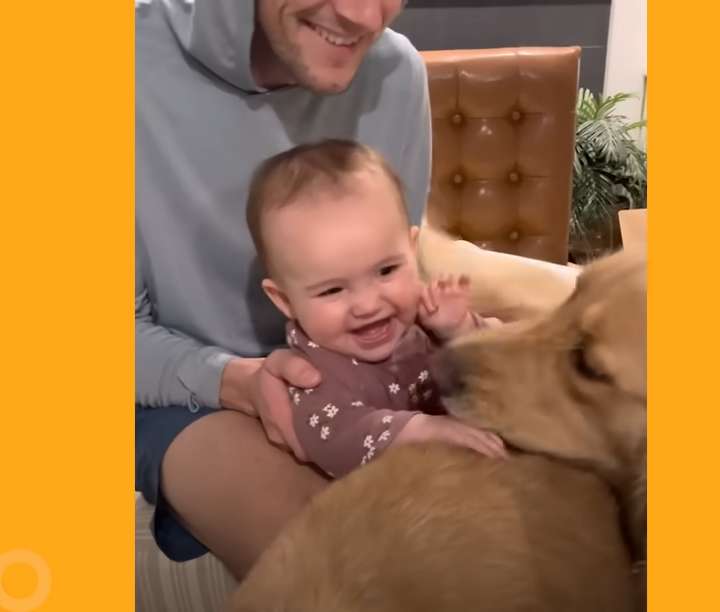
One particularly heartwarming moment is the baby’s first word, which happens to be “dog.” This seemingly simple utterance signifies the profound impact these canine companions have had on the baby’s early life, solidifying their place as cherished members of the family.

As the baby grows, the video continues to document the evolving dynamics of their relationship. We see the dogs patiently watching over the baby during playtime, offering gentle guidance and playful encouragement. Their presence provides a sense of security and comfort, fostering a sense of trust and companionship that transcends words.
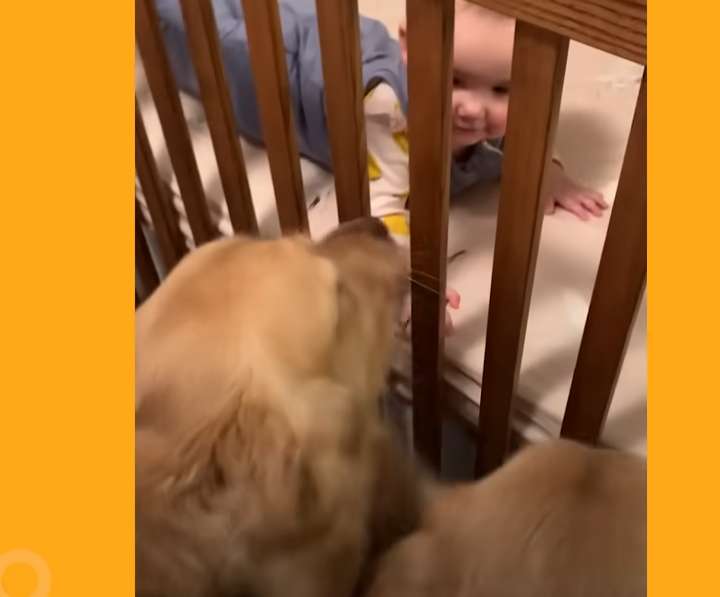
The story of Winston, Doug, and their human sister serves as a beautiful testament to the unique and powerful bond that can form between dogs and children. It highlights the unwavering loyalty, protectiveness, and unconditional love that dogs possess, making them invaluable companions and guardians in a child’s life.
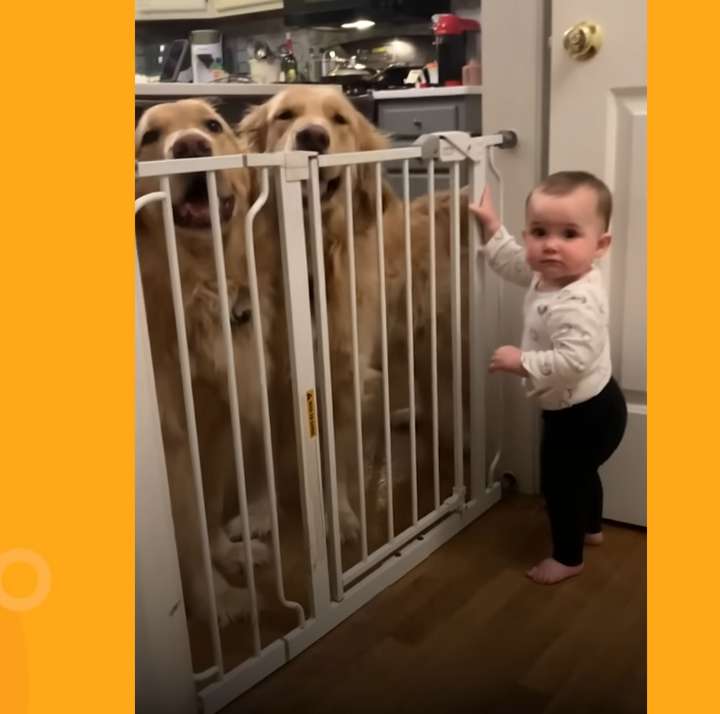
This heartwarming narrative goes beyond simply documenting a cute animal interaction. It reminds us of the inherent capacity for love and empathy that resides within both humans and animals. It underscores the importance of fostering positive relationships between children and pets, creating a foundation for trust, understanding, and lifelong companionship.
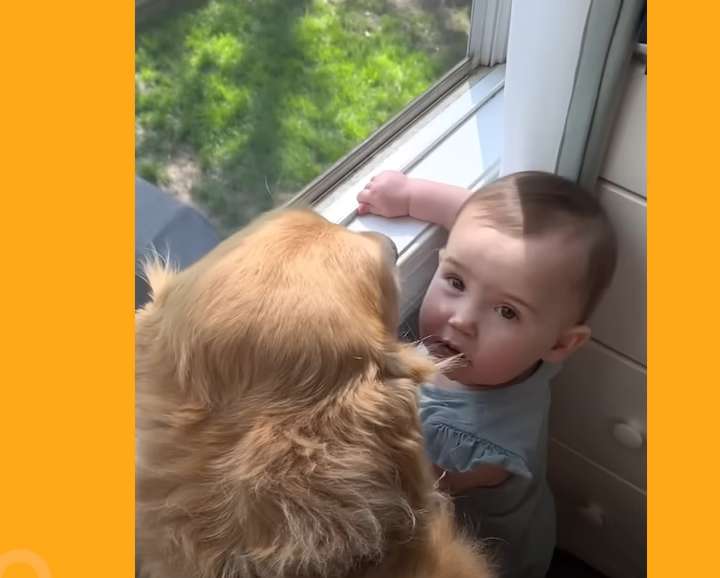
Watch The Full Video Here:
If you’ve noticed your furry friend panting more than usual, it might leave you wondering what’s going on in their world. Dogs pant for various reasons, and understanding why they do it can provide valuable insights into their well-being. Imagine your pup’s panting as a form of communication, a way for them to express themselves without words. It’s like their own unique language that speaks volumes about how they’re feeling.
As a seasoned dog enthusiast, you’ve probably encountered moments when your canine companion’s panting caught your attention. It’s essential to decode the messages behind this behaviour to ensure you’re tuned in to your dog’s needs. So, the next time you see your pup panting away, remember, there’s more to it than just cooling down – it’s a window into their world that deserves a closer look.
Understanding Dog Panting
Have you noticed your dog panting a lot lately? Here’s why:
Regulating Body Temperature
Dogs can’t sweat like humans, so they pant to cool down. It’s their way of regulating body temperature when they’re overheated.
Physical Exertion
After a play session or a long walk, your furry friend pants to catch their breath. It’s like us taking deep breaths after a workout.
Stress and Anxiety
Just like humans, dogs pant when they’re stressed or anxious. Loud noises, new environments, or separation can trigger this behavior.
Pain or Discomfort
Panting can indicate pain or discomfort in dogs. If your pup is panting excessively without an apparent reason, it’s essential to consult a vet.
Medical Conditions
Certain medical conditions like obesity, heart problems, or respiratory issues can also cause excessive panting in dogs. Regular check-ups are crucial.
Allergies or Irritants
Inhalation of allergens or irritants can lead to panting in dogs. Keep an eye out for triggers like pollen, dust, or smoke.
Stay Attentive
Understanding why your dog is panting excessively is key to ensuring their well-being. Keep an eye on their panting patterns to detect any unusual behavior.
Summary
Dog panting serves as a vital communication tool to convey various needs and emotions. By being aware of the reasons behind your dog’s panting, you can better address their requirements and ensure they’re happy and healthy.
Common Causes of Excessive Panting in Dogs
Age:
As dogs age, panting can increase due to various age-related issues such as obesity, arthritis, or heart problems. Older dogs may also pant more as a result of reduced physical activity.
Heat:
High temperatures, especially in hot weather or direct sunlight, can cause dogs to pant excessively as a way to cool down. Ensure your furry companion has access to shade and water.
Exercise:
After physical activity, dogs pant to regulate their body temperature. Vigorous exercise or play can lead to increased panting, which should gradually decrease as they rest.
Stress or Anxiety:
Like humans, dogs can experience stress or anxiety triggers that lead to panting. This could be due to loud noises, separation anxiety, or changes in their environment.
Pain or Discomfort:
Panting can be a sign of pain or discomfort in dogs. They may pant if they are injured, have digestive issues, or are experiencing any form of discomfort.
Medical Conditions:
Underlying medical conditions such as respiratory problems, heart disease, or hormonal imbalances can cause excessive panting in dogs. Consult a vet if you notice persistent or concerning panting behavior.
By understanding the common causes of excessive panting in dogs, you can better assess your furry friend’s well-being and ensure they are comfortable and healthy. Monitoring changes in their panting habits and seeking veterinary advice when needed can help address any issues promptly.
Ways to Address Excessive Panting in Dogs
When it comes to addressing excessive panting in dogs, here are some practical steps you can take:
Monitoring Your Dog’s Environment
Make sure your dog has access to fresh water and a comfortable resting place in a well-ventilated area. Avoid exposing them to extreme temperatures, and provide shade on hot days.
Exercise Management
Adjust your dog’s exercise routine to prevent overexertion, especially during hot weather. Opt for walks during cooler times of the day and consider indoor exercise alternatives.
Stress Reduction
Create a calm and soothing environment for your dog, minimizing potential stressors such as loud noises or crowded spaces. Give them a peaceful retreat where they can relax.
Pain Management
Regularly check for signs of discomfort or pain in your dog, such as limping or whining. Consult with your veterinarian to address any underlying pain issues effectively.
Veterinary Consultation
If your dog’s excessive panting persists or is accompanied by other concerning symptoms, consult your vet promptly. They can perform a thorough examination to diagnose any potential medical conditions.
By proactively addressing the factors contributing to your dog’s excessive panting, you can help ensure their well-being and comfort. Remember, your furry friend relies on you to understand and address their needs promptly.
Conclusion
So there you have it – the reasons behind why your furry friend might be panting so much. From regulating their temperature to dealing with stress and medical issues, there’s a lot that can cause excessive panting in dogs. By keeping an eye on their surroundings, managing their activity levels, and being attentive to their needs, you can help keep your pup happy and healthy. Remember, when in doubt, it’s always best to consult with your vet to ensure your dog gets the care they deserve. Keep an eye on those panting episodes, and you’ll be able to give your canine companion the best shot at a comfortable and content life.
Frequently Asked Questions
Why do dogs pant excessively?
Dogs may pant excessively due to reasons like temperature regulation, physical exertion, stress, pain, or underlying medical issues. Allergies can also trigger excessive panting in dogs.
How can I help my dog with excessive panting?
To assist a dog with excessive panting, monitor their environment for temperature changes, manage exercise to prevent overexertion, reduce stress triggers, address any signs of pain, and consult a vet if panting persists abnormally.
Why is it important to address excessive panting in dogs?
Addressing excessive panting in dogs is crucial for ensuring their well-being and comfort. Proactive care involves recognizing signs early and taking necessary steps to maintain a dog’s health and happiness.